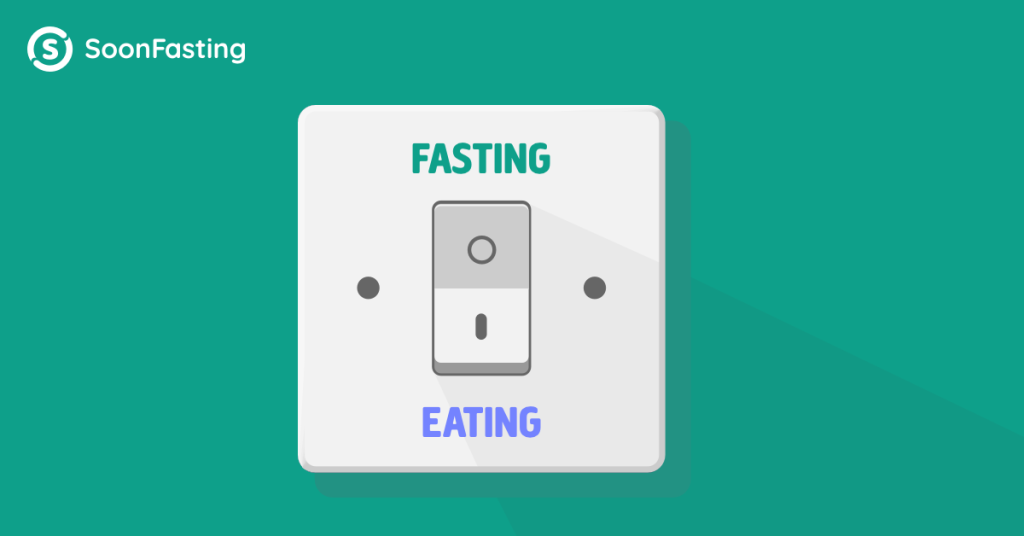Nowadays, there are numerous approaches to weight loss online or offline. And intermittent fasting, also called IF, is one tactic that has gained popularity in recent years.
Regular, brief fasts, or times when little to no food is consumed, are part of the eating pattern known as intermittent fasting. Intermittent fasting is typically perceived as a weight loss strategy compatible with the balance between health and fitness. Short-term fasting encourages people to consume fewer calories, which could eventually lead to weight loss.
However, it’s not that easy to well start intermittent fasting without any guide and some principles should be followed if you want to kick off your first fasting window efficiently and healthily.

What is Intermittent Fasting and Why does it Work for Weight Loss?
What on earth is intermittent fasting?
An eating strategy known as intermittent fasting alternates between fasting and regular mealtimes. While many diets concentrate on what to eat, intermittent fasting only considers when to eat. You only eat when it is appropriate when you are practicing intermittent fasting. Your body can burn fat if you fast for a set period of time each day or consume only one meal a couple of days a week.
Mark Mattson, a neuroscientist at Johns Hopkins, has spent 25 years researching intermittent fasting. According to him, our bodies have evolved to be able to survive for several hours, or possibly several days or more, without eating. Prior to learning how to cultivate crops, early humans were hunters and gatherers who developed the ability to live for extended periods of time without food. They had to hunt wildlife and gather nuts and berries, requiring a lot of time and effort.
“Intermittent fasting contrasts with the normal eating pattern for most Americans, who eat throughout their waking hours,” Mattson says. “If someone is eating three meals a day, plus snacks, and they’re not exercising, then every time they eat, they’re running on those calories and not burning their fat stores.” By extending the time until your body has burnt through the calories from your most recent meal and has started burning fat, intermittent fasting works. This is also why IF can help you lose weight.
Must-Follow Rules to Stick to Before Really Starting Intermittent Fasting for Weight Loss
Before beginning intermittent fasting, it’s crucial to consult your doctor. The real practice is easy once you get their approval. And here are some must-follow rules that should be stuck to intermittent fasting for weight loss.
Choose the right plan
Intermittent fasting can be done in a variety of ways. The number of fast days and calorie limitations varies between the strategies. Here are some of the most common IF strategies that people typically use for weight loss that you’ll see online and on social media. Read on to find out the shortcuts to selecting an optimal intermittent fasting plan.
12-hour fast method
Beginners may want to consider this kind of intermittent fasting diet. This is because the fasting window is so brief, the person can have the same quantity of calories every day, and most of the fasting happens while they sleep (yes, sleeping is included in the fasting window, meaning if you sleep 7 to 8 hours a day, you can start from 16:8 or 14:10 at least).
Therefore, the simplest approach to complete the 12-hour fast is to include the time spent sleeping.
One can decide to abstain from food between the hours of 7 p.m. to 7 a.m. They would have to finish dinner before 7 o’clock and wait until 7 a.m. to eat breakfast, but they would spend much of that time asleep.
16:8 fasting method
As one of the most popular intermittent fasting plans, the 16:8 method entails limiting your daily eating window to eight hours and observing a 16-hour fast every day. On this fast, folks often finish their evening meals by 8 p.m. and don’t eat again until midday the next day after skipping breakfast.
23 obese men and women participated in a study that was followed for 12 weeks by the 16:8 diet. Those on the 16:8 diet consumed 350 fewer calories per day, shed a little amount of weight (approximately 3 percent of their body weight on average), and had lower blood pressure compared to a group that had eaten regularly and not within a predetermined timetable.
Alternate day fasting
The alternate-day fasting regimen, which calls for fasting every other day, comes in a variety of forms. Alternate-day fasting can entail avoiding all solid foods on fasting days for some persons while allowing up to 500 calories for others. People frequently decide to eat as much as they want on feeding days.
Eat-stop-eat diet
This form of intermittent fasting entails a 24-hour full fast once or twice per week. For instance, you might eat dinner at 6 p.m. and then fast until 6 p.m. the following day. However, you wouldn’t do this more than once or twice weekly.
Find a right meal plan
It’s not necessary to be very rigid while arranging meals. It takes into account caloric intake and includes the right nutrients in the diet.
Meal planning has numerous advantages, including assisting someone in staying under their calorie budget and ensuring they have the ingredients on hand to prepare recipes, quick meals, and snacks.
Keep a Track of your fasting
You can choose one of the fasting methods above and all you have to do is keep track of your fasting and feeding windows. Don’t want to be bothered with setting alarms every day to remind yourself that it’s mealtime? All of this is possible with an intermittent fasting app.
Both newbies and experienced users will love the great intermittent fasting app – Soon. You can easily create and modify your fasting plan, monitor your progress, set reminders and notifications, and track your achievement.
Moreover, the content contained in Soon lets any faster better understand intermittent fasting and expand our knowledge about it.
References: